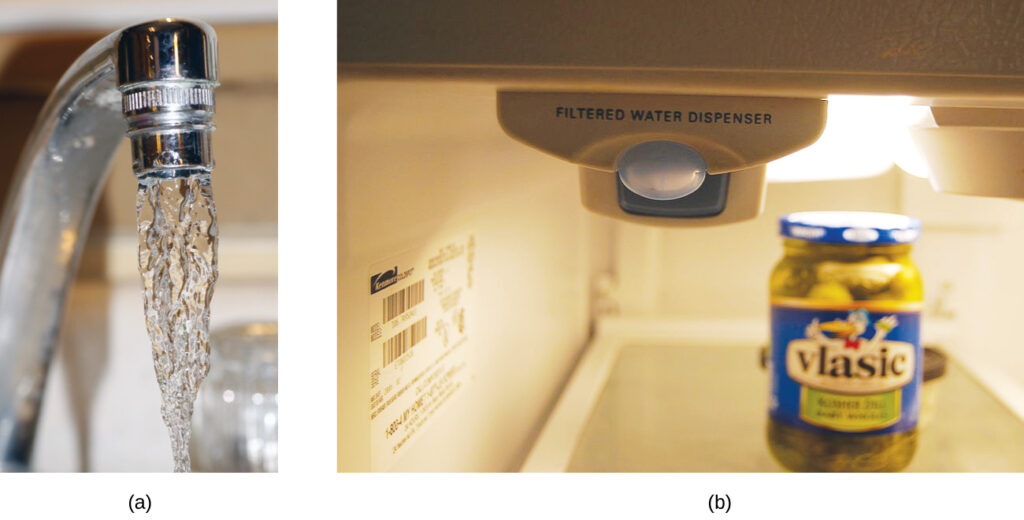Very low solute concentrations are often expressed using appropriately small units such as parts per million (ppm) or parts per billion (ppb). Like percentage (“part per hundred”) units, ppm and ppb may be defined in terms of masses, volumes, or even numbers of atoms, as long as the units are the same (so that units cancel).
The mass-based definitions of ppm and ppb are given here:
$$ \text{ppm}\,=\frac{\text{mass solute}}{\text{mass solution:}}\,\times\,10^6\, \label{eq1}\tag{1} $$
$$ \text{ppb}\,=\frac{\text{mass solute}}{\text{mass solution}}\,\times\,10^9\, \label{eq2}\tag{2} $$
Note that for each “parts per” calculation, the ratio definition is the same, and the power of 10 used is the same as in the name (i.e. “parts per million” is the mass ratio times one million, “parts per billion” times one billion, etc). Knowing this, how would you calculate another common unit, parts per thousand?
As with $w/w, the denominator in this definition refers to the total mass of the solution (solvent and all solutes). However, since ppm, ppb, and their cousins are almost always used to describe very dilute solutions, it is
Both ppm and ppb are convenient units for reporting the concentrations of pollutants and other trace contaminants in water. Concentrations of these contaminants are typically very low in treated and natural waters, and their levels cannot exceed relatively low concentration thresholds without causing adverse effects on health and wildlife. For example, Health Canada has identified the maximum safe level of fluoride ion in tap water to be 2.4 ppm (although the recommended maximum for treated water is 1.5 ppm, and the “optimal” level is 0.7 ppm). Inline water filters are designed to reduce the concentration of fluoride and several other trace-level contaminants in tap water.

Calculation of Parts per Million and Parts per Billion Concentrations
The City of Calgary’s water source naturally contains fluoride at 0.1-0.4 ppm (below the nationally recommended level). In 2024, the City will resume adding fluoride to the municipal water supply to bring it up to the recommended level of 0.7 ppm fluoride.
What mass of fluoride (as F-) is in 1000 L of water at the lowest natural level of 0.1 ppm?
What mass of sodium fluoride (NaF) should be added to bring this 1000 L to the recommended 0.7 ppm fluoride concentration?
Solution:
To determine how much fluoride is in the water initially, we begin from the definition of the ppm unit (Equation $\ref{eq1}$ above): $$\text{ppm}\,=\frac{\text{mass solute}}{\text{mass solution:}}\,\times\,10^6 \\ 0.1\; \text{ppm F}^- = \left( \frac{\text{mass F}^-}{1000\; \text{L} \times \frac{1000\; \text{mL}}{1\;\text{L}}\times \frac{0.9970479\; g}{\text{mL water}}}\right) \times 10^6\\ \mathbf{\text{mass F}^- = 0.09_{970}\;\text{g}}$$ (Water density is found in the Appendix, and assumes 25°C.).
For a 0.7 ppm sample, we would have: $$\text{p}\text{pm}\,=\frac{\text{mass solute}}{\text{mass solution:}}\,\times\,10^6 \\ 0.7\; \text{p}\text{pm F}^- = \left( \frac{\text{mass F}^-}{1000\; \text{L} \times \frac{1000\; \text{mL}}{1\;\text{L}}\times \frac{0.9970479\; g}{\text{mL water}}}\right) \times 10^6\\ \text{mass F}^- = 0.6_{979}\;\text{g}$$ So we would need to add: $$0.6_{979}\;\text{g} – 0.09_{970}\; \text{g} = 0.5_{982}\; \text{g F}^- $$ Notice that this was ppm of fluoride (and therefore mass of fluoride). We were asked how much NaF was needed, which has a different mass. However, 1 mol of NaF will produce 1 mol of F– when dissolved, so we can convert with stoichiometry: $$0.5_{982}\; \text{g F}^- \times \frac{1\; \text{mol F}}{19.00\; g} \times\frac{\text{1 mol NaF}}{\text{1 mol F}^-} \times\frac{41.99\;g}{1 \text{mol NaF}}\\ \mathbf{ = 0.1_{322}\; \text{ g NaF}}$$